Not only does cleaning and relubrication of the chain, preserve valuable drivetrain components, it also makes the bike easier to pedal, saving valuable energy.
Therefore, chain lubrication is an absolute must.
However, to do the job right, you must first CLEAN the chain and clean everything the chain comes in contact with.
There is little point in over-lubricating a dirty chain, thus making it gloopy.
Here is a shot of a goopy rear derailleur jockey wheel and cruddy chain.

Putting more lube on an over-lubricated bike is not good for your bike.
In the other extreme, not lubricating your bike enough is definitely not good for your bike either.
So, how do you find the sweet spot?
To answer this, we need to understand how a chainis made to determine when the chain needs maintenance.
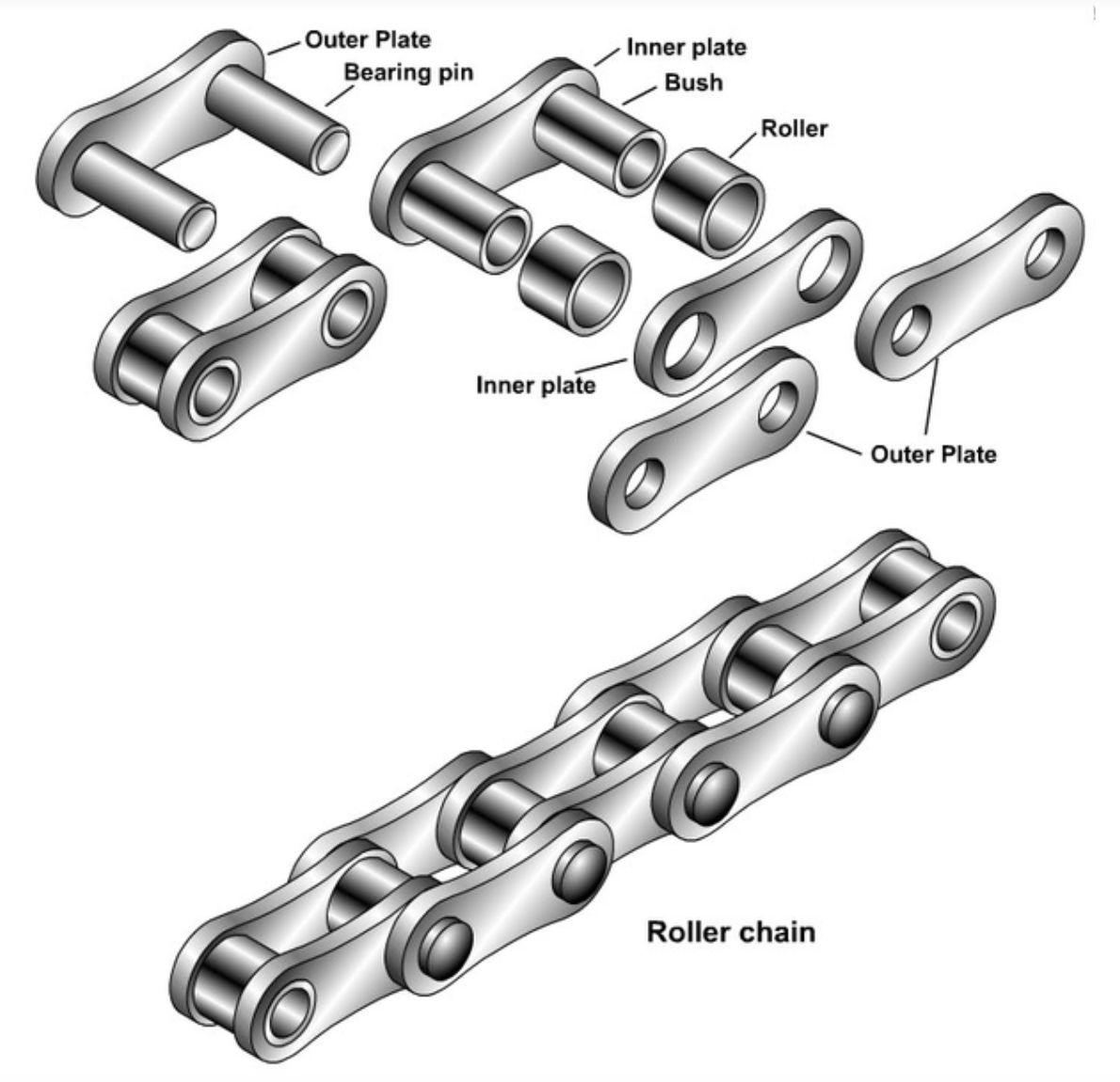
A bicycle chain is known as a “roller chain”. The Inner links have bushings for the rollers. The rollers allow the chain to engage the gears smoothly and with minimum friction.
The outer chain links support the bushings and hold the chain together.
The key components are the inner plate bushings that allow the outer plate bearing pins to pivot smoothly and the rollers to roll freely when engaging a gear.
Looking at the above chain diagram, where would you expect the most chain wear to occur?
If you guessed the interface between the Inner plate pin Bushing and the Outer plate Bearing pin, you would be correct.
This type of wear is called “chain stretching”. In reality, the chain links do not stretch. The pins and bushings wear out causing the critical distance between rollers to increase.
The following diagram shows how the links on a worn bicycle chaincontribute to stretching.
A good chain is at the top of this diagram.
The worn and stretched chain is on the lower diagram.
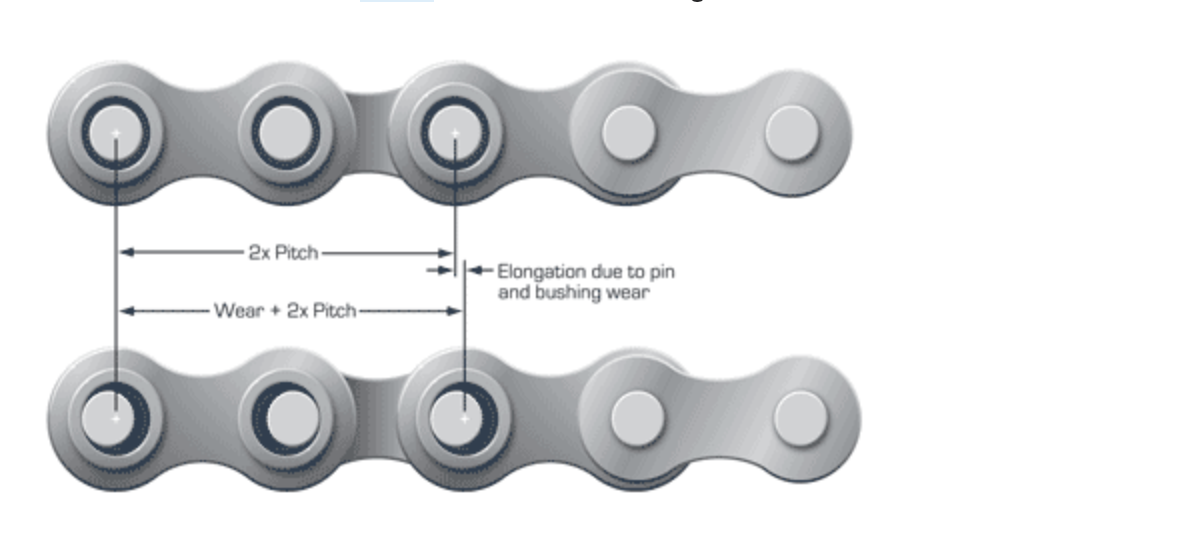
The chain is elongated due to worn bushings, which will cause extreme damage to the drivetrain very quickly. All this chain wear is hidden within the chain. A worn chain can look perfectly fine.
Worn pins and bushings change the critical “pitch”, which is the way the chain engages drivetrain components. The distance between bushings has increased, or “stretched”.
How bad is this? Well, this chain stretching can destroy your bicycle’s entire drivetrain very quickly.
The phenomenon caused by a worn chain is called “Shark’s teeth”.
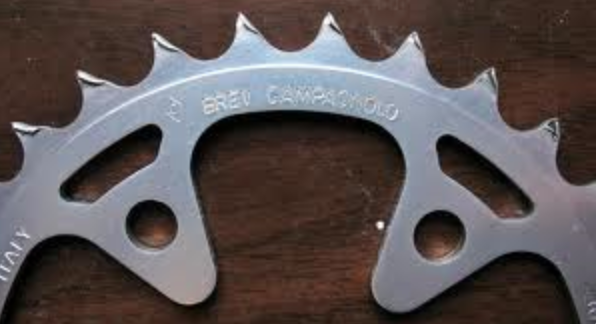
Here is a picture of a good chainwheel in the background with a damaged ‘shark toothed’ chainwheel at the front. Notice the difference.

Shark’s teeth happen because the gears must squeeze the stretched chain into the gear teeth designed for a good chain with proper link spacing.
Shark teeth drivetrain damage does not take long to develop with a stretched chain.
So, what to do and when?
This damage can be prevented.
(1) Clean your chain and drivetrain frequently.

The little brush is for cleaning the drive train, including the cassette, crankset, and derailleur jockey wheels. You can use an old cloth to clean the chain. Once the chain and drive system is clean and shiny, apply some bike lubrication generously.
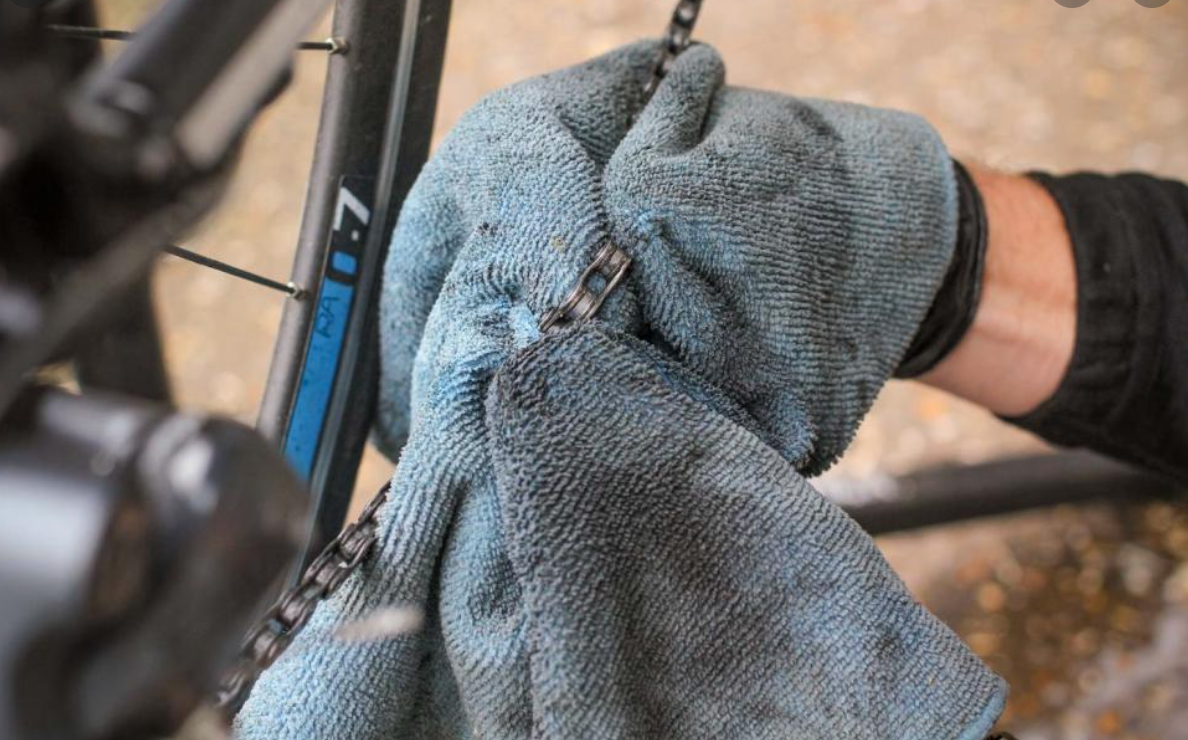
As already mentioned, we can’t see inside the stretched chain to determine if it is damaged. However, there is a way to determine if the chain is already stretched and we can do this with the following tool.
Use this chain tool to determine if the chain is already stretched.
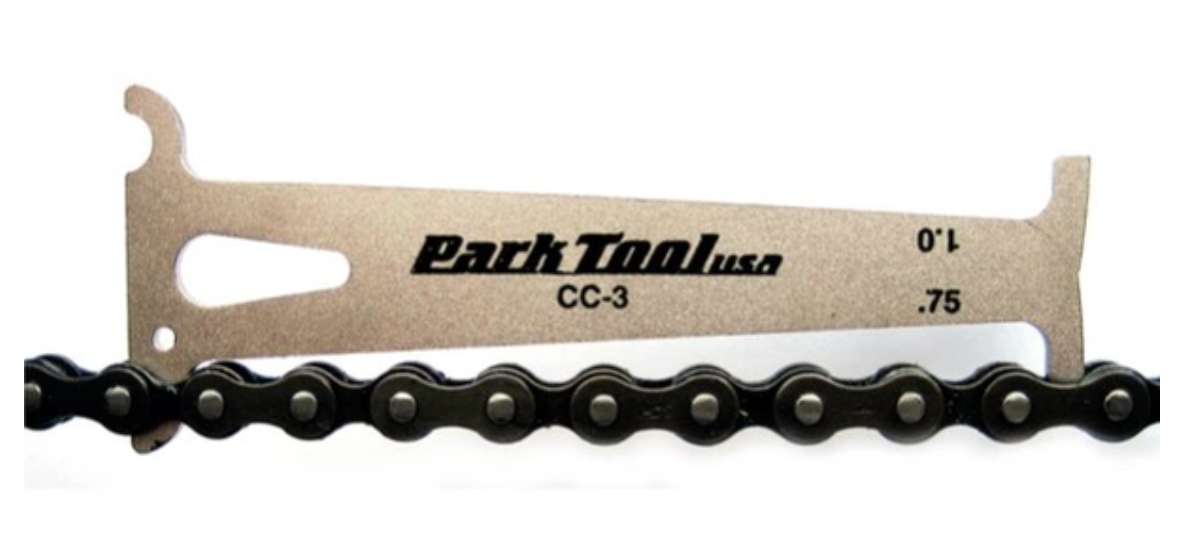
If the chain is already worn and stretched, you need to replace it quickly before it turns your whole drive system to shark teeth, hence becoming very expensive to replace. A new chain will cost you €20- €30. New drive systems will cost hundreds €€€€ 🙁
In conclusion, regular cleaning of the chain and drive system will
i) make the bike easier to cycle
ii) Substantially reduce the cost of maintaining your bike
iii) Make your bike last for years and years.
If, for any reason you can’t do this service yourself, drop your bike into one of our friendly mechanics and we will take care of it.
Happy cycling
John and team

